What is a Branched Narrative?
Importance of Narrative
What is a branched Narrative? And what are the uses of it? There are many different sorts of Branched Narratives, or in this case a branched video. Finding the one that fits the experience you want to create is therefore quite important.
Here are some of the most popular Story Narratives.
Styles of a branched Video
Linear Storyline
To be able to make an account you should head over to the Smart VR Lab Register website or use the link to sign up.

A linear story even for Virtual Reality, follows the same paths as a normal linear story. There is never an option of answering an alternative answer and getting another ending.
The person experiencing the story is placed within the story that’s happening. They’re soon presented with a problem that requires certain actions and effort to overcome. When the user succeeds it usually means the end of the story and you’re shown the ending.
So in short; The user has to follow a predetermined path towards the ending without their input affecting the ending of the story.
Linear Storytelling in (VR) Interactive Videos
If you’d like to expand your knowledge in (VR) Interactives then maybe a linear storyline is the one that fits your story the best.
An example for this would be;
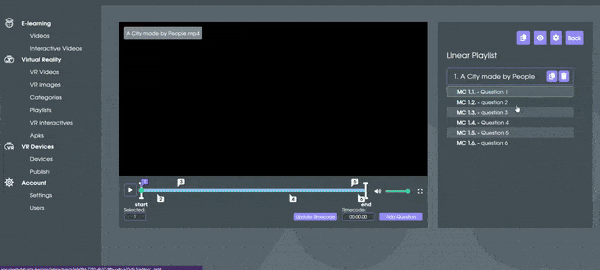
As you can see in this Interactive, you progress through the video with some questions here and there, which all only have one answer. This is an example of how you can make a multiple choice linear storyline. With multiple choice not actually being used, as we only ever have one answer.
Linear storytelling also works great with the checkbox structure.
String of Pearls
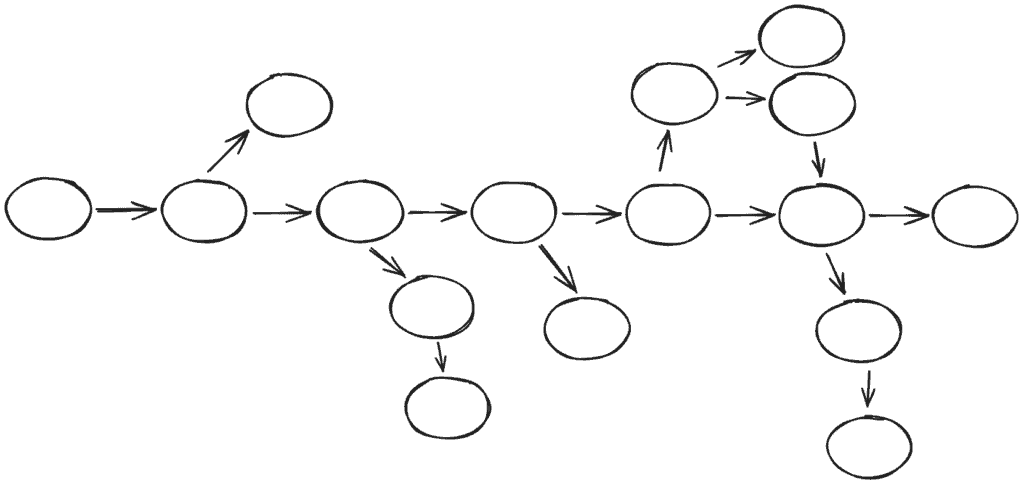
The string of pearls, also known as the wide linear structure, is basically a main storyline which branches off slightly. It allows for a less linear experience while going through the plotline. You can for example, choose an answer and get a slightly different situation than the other choices while eventually being lead back towards the main storyline. Or you answer the question incorrectly and get a premature ending.
This is a structure that’s used most commonly.
String of Pearls storytelling in (VR) Interactives
The string of pearls has to be used in a branched narrative Interactive video.
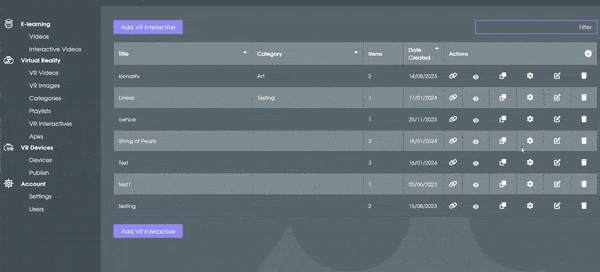
As you can see in the example above, some answers lead to completely different scenarios. While others come to an abrupt end and others lead down the main storyline.
The Branch-and-Bottleneck Map
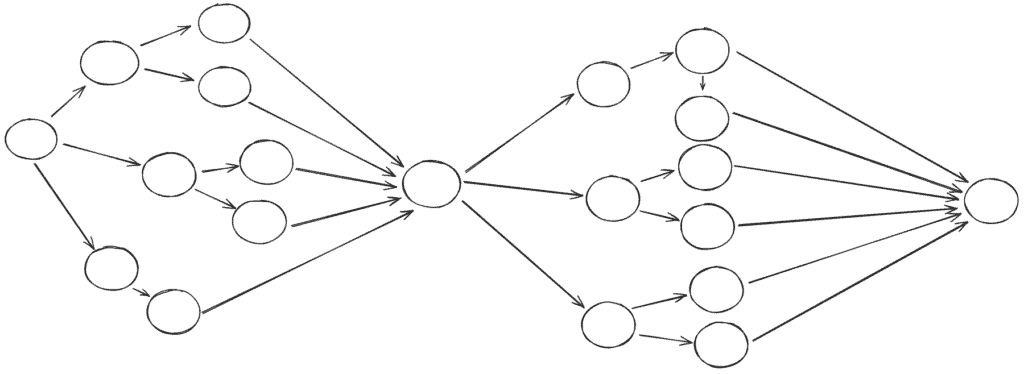
A branch-and-bottleneck structure allows the users to explore different paths in the story that eventually rejoin the larger narrative. So you could have multiple answers in a video that have their own side stories but in the end still join the plotline. You could do this if there isn’t necessarily one correct answer to the questions.
Be careful of using this method sparingly or the user could get the feeling that the choices they make have no effect on the story of your interactive video and it’ll make the experience less interesting.
Branch and bottleneck Storytelling
Branch and bottleneck storytelling is a branched narrative type of interactive that can only be used as such.
Checkbox or multiple choice can be used.
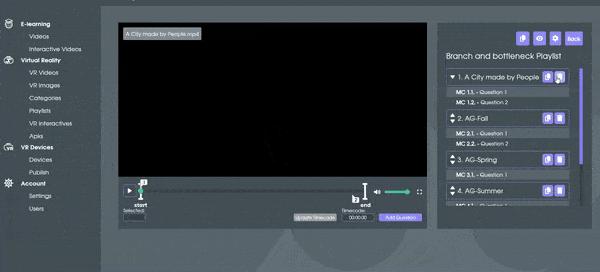
As you can see in the video above; we immediately branch out to multiple different videos. In these videos more questions and answers are given, with no real consequence to answering one or the other.
We then go back to the main video with all the answers, coming to the bottleneck of the structure.
As you can see, this can be useful if you want to experience different decisions without it really effecting the outcome.
The Many Endings Structure
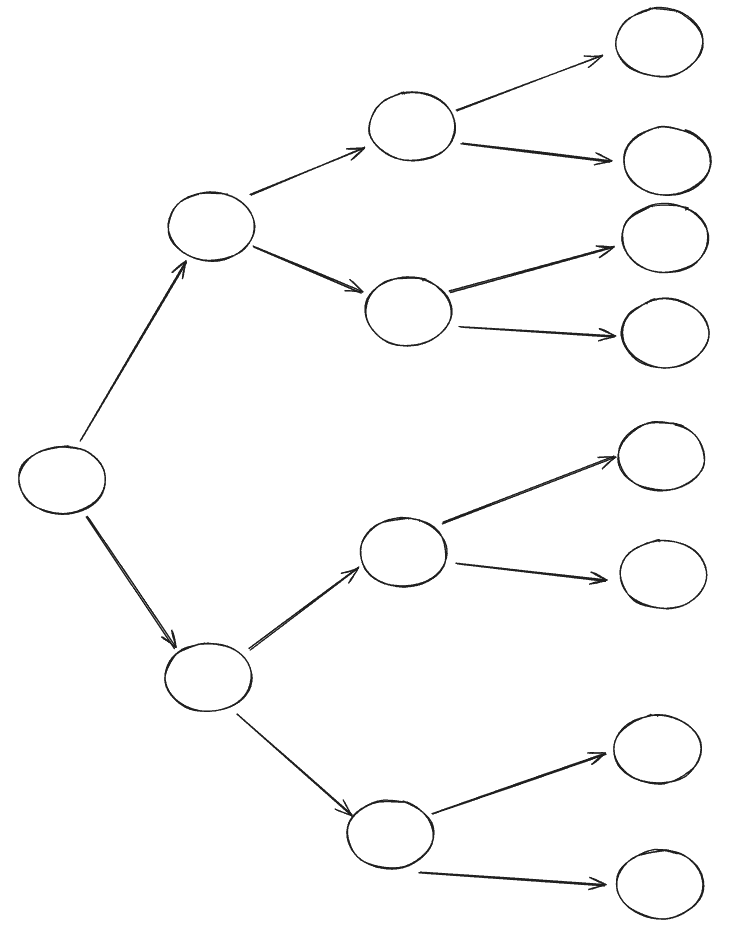
The many endings structure allows your user to really have a big impact on the storyline. Every time a question is answered they get thrown to another path. This way the user can experience the different outcomes of the story and see which consequences are attached to the choices you make throughout the video.
This is also the method we see most used in our training videos.
However, be aware that too much choice can give the user a feeling of confusion or aimlessness. Finding the balance to it all is ultimately the key to having a good Branched Video.
Many Endings Storytelling
Below you’ll see an example of a Many endings Structure in storytelling:
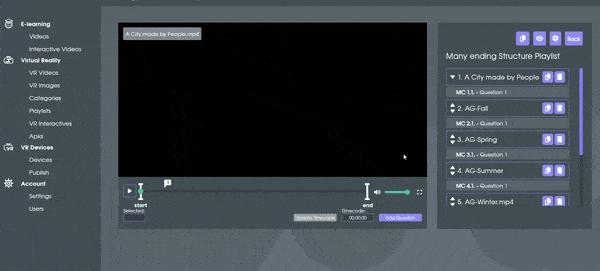
In the video above you can see that on the first question you’re immediately presented by a choice answer 1 or 2? It then splits off into different videos and continues splitting off until the ending.
With this type of storytelling you can really show the effects your choices have on the outcome of the (VR) Interactive.
Did you know?
You can combine these Branched Narratives to create an even more immersive (VR) Interactive